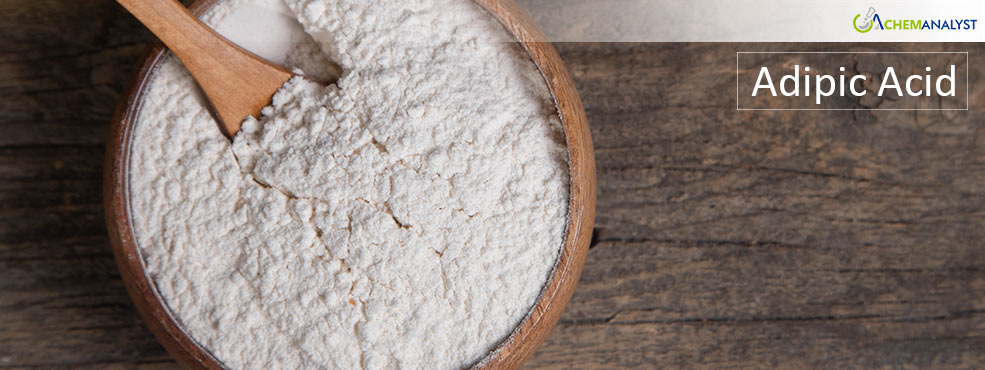Global Adipic Acid Prices Show Divergent Trends Amid Regional Challenges
- 20-Nov-2024 10:30 PM
- Journalist: Gabreilla Figueroa
Adipic Acid prices exhibited mixed trends across key global markets in the first half of November. While the American market remained stable due to balanced supply and demand, prices in Europe experienced a decline, driven by subdued automotive and textile sectors. In Asia, particularly in China, Adipic Acid prices trended downward due to moderate demand and adequate inventory levels despite improved conditions in the automotive sector.
In the United States, Adipic Acid prices remained stable despite rising benzene costs, a key feedstock. Subdued demand from automotive and textile industries, coupled with adequate inventory levels, helped offset upward price pressures. Demand from the automotive sector remained weak, with car sales driven largely by inventory replenishment rather than new production. Additionally, reduced cotton production and exports impacted the textile industry, further suppressing demand for Adipic Acid. However, supply chains were affected by logistical challenges, including extended delivery times due to hurricanes and freight constraints. The U.S. manufacturing sector continued to contract, although the pace of decline has moderated.
In contrast Adipic Acid prices in Europe, particularly in Germany, trended lower due to continued weakness in demand from both the automotive and textile sectors. Despite stable benzene prices and adequate inventory levels, challenges in the German automotive market, including a 5% year-on-year decline in electric vehicle registrations, contributed to reduced purchasing activity. The textile sector also faced headwinds, with oversupply issues and declining exports due to global trade disruptions. While freight rates from Northern Europe to Asia eased, supporting supply chain efficiency, concerns about potential U.S. tariffs on German car imports have added to Adipic Acid market uncertainty.
In case of Asian region, Adipic Acid prices followed a downward trend, largely driven by moderate demand from downstream sectors, especially automotive and textiles. However, positive developments in the automotive sector, including a 3% increase in vehicle sales year-to-date, helped cushion the decline in Adipic Acid prices. The country’s manufacturing sector showed signs of recovery, with higher production levels and efforts to rebuild safety stocks. Nonetheless, the impact of Typhoon Kong-rey and the subsequent shipping delays have put additional strain on supply chains, further contributing to downward price pressures.
The Adipic Acid market is expected to continue reflecting regional disparities. In North America, stable prices are likely to persist as manufacturers address ongoing supply chain challenges whereas European markets will face continued pressure due to subdued demand, particularly in the automotive and textile sectors. In Asia, improving automotive sales and stronger production activity may help stabilize prices, although global economic uncertainties and logistical disruptions will remain critical factors influencing market dynamics.



